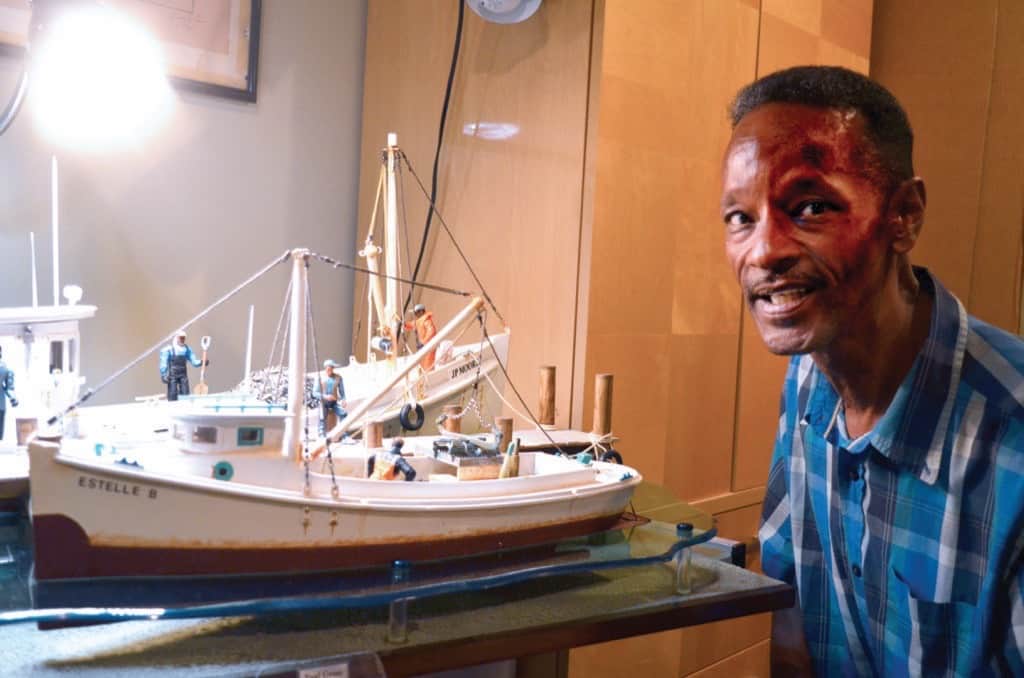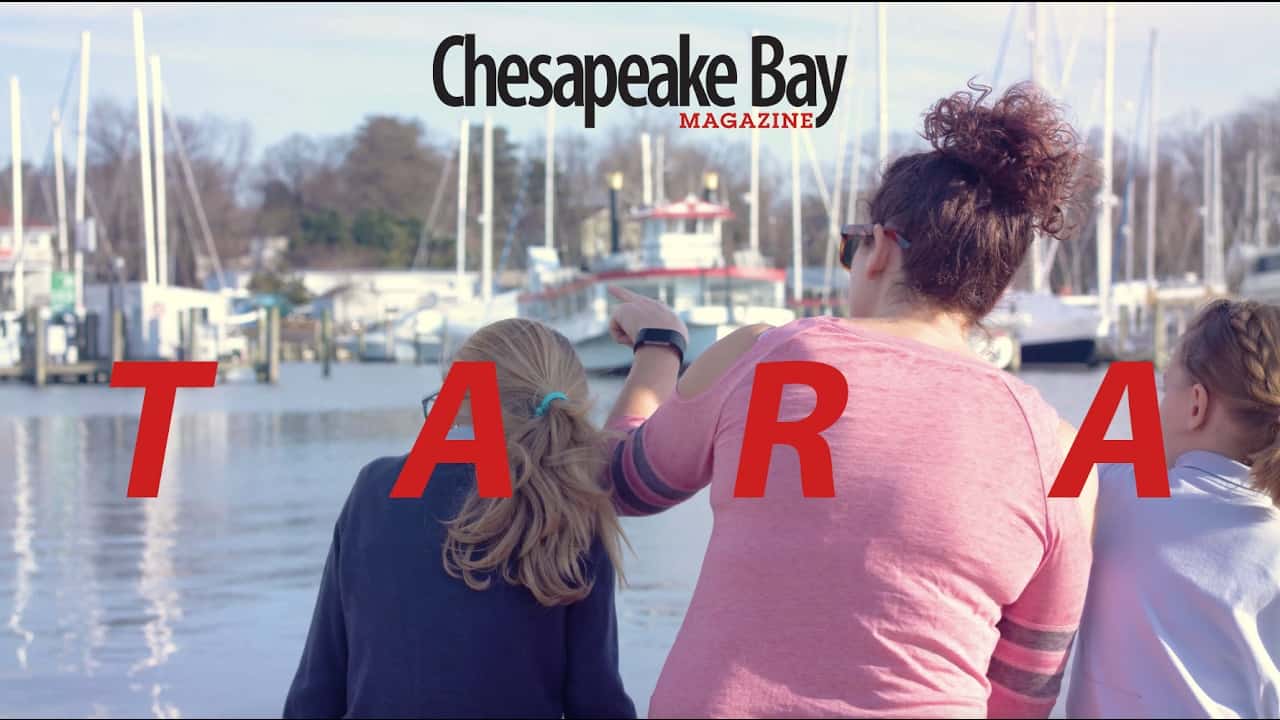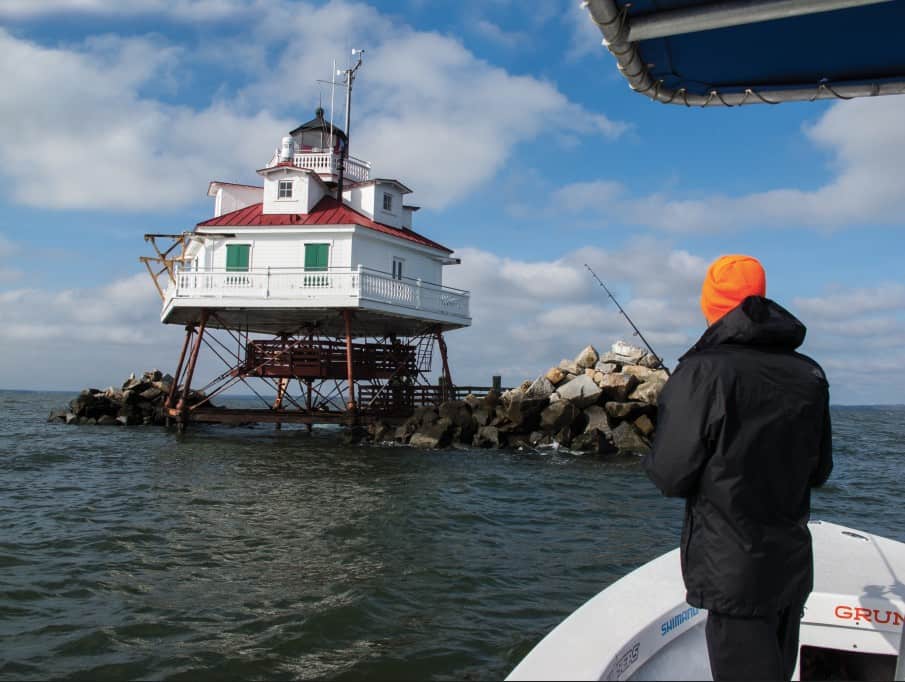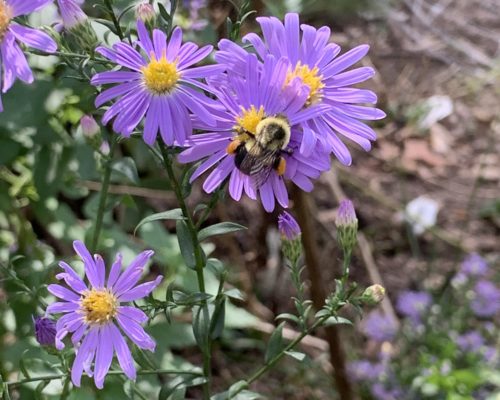Norman Gross recreates the Bay boats of his childhood.
Norman Gross has worked on countless boats in his lifetime, however his most recent projects have garnered the most attention. His scale replicas reflect the history of a family deeply entwined with the Chesapeake Bay. The characters featured in his work tell the stories of real people.
Gross’ father Frank was one of a long line of watermen who made their livings harvesting from the Chesapeake. Growing up in Shady Side in the 1970’s, Gross spent much of his childhood on the Bay. Before he was in the first grade, his father would take him oystering on his uncle Rodney’s boat. He recalls the grueling labor and chilling conditions of culling oysters at such a young age—“As soon as he put them up on the culling board you had to move fast because if you didn’t, they would freeze to the steel.”
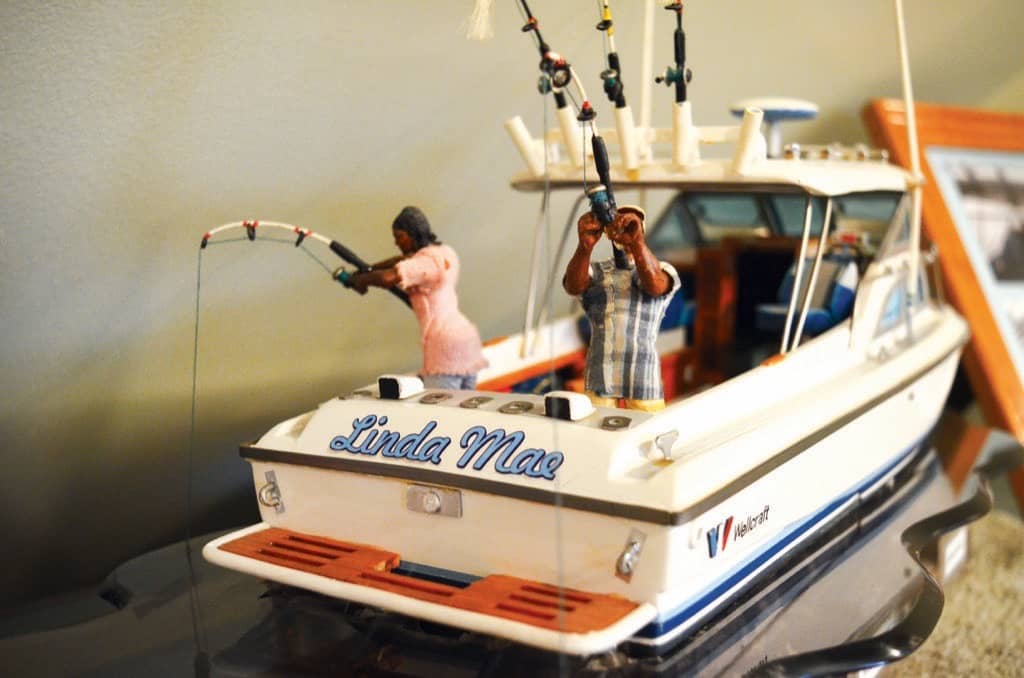
Gross and his younger brother would strike frozen clusters of shells with a stick as they moved oysters across the culling board of his uncle’s boat. Eventually, the bitter winters on the Chesapeake wore down the then 10-year-old Gross. He knew he had to tell
his father he couldn’t become
a waterman.
“I had hypothermia that day when I told him,” Gross said. “I mean I was freezing and shaking to death, and I said ‘Dad, I can’t do this kind of work when I grow up’.”
Gross’ father warned him not to outright dismiss the idea of making a living on the water, and that he may have to someday. Nonetheless, by the age of 12, Gross had stopped going oystering.
Gross developed as an artist through his years in school as he practiced with paints and drawing. While he continued to spend his summers pulling crab pots and soft shell clamming, Gross made his way in the marine industry “from the bottom up” as a shipwright.
“I used to come home looking like a Smurf every day, blue paint and everything covered from head to toe, and I said there’s got to be a better way to make a living,” he recalls.
Gross’ skills in matching colors and mixing paint guided his career as he went from painting boat bottoms to gelcoat and fiberglass application.
Gross joined the Army, returning to the Bay three years later in 1980. He found the departure from the constant orders and routines of military life jarring. His eldest brother told him he didn’t seem right and invited him to come crabbing. Gross says that reunion with the water was what he needed to set him straight. Much later, he attempted to immortalize this memory in one of his first models.
In 1986, on a whim, Gross built his first boat model. It fell apart on its maiden voyage while he was on vacation in Florida. It turned out, you’re not supposed to put these models in the water.
It wasn’t until Gross turned 52 that he returned to modelmaking.
Having spent a great deal of time reflecting on his return to the water after he had left the military, he decided to try his hand at recreating that life.
Working from a photographic memory, he meticulously recreated every detail of the encounter down to the folds of his brother’s signature “go to hell” hat. The boat, crabs, and characters were frozen with nets mid-swing to capture the moment.
Gross recalled the blue hue of the crabs, barely visible through the shallow water. He later mirrored this element in the plexiglass panes he rests his models in.
“After I built the first one I started thinking about the history of the watermen and these boats you probably won’t be seeing too much anymore,” Gross says.
From there, Gross constructed several models including his grandfather’s boat, the Ruth Ann, his father’s boat, the Miss Myrtle, and his uncle Rodney’s oystering boat, Puddin, which he’d worked as a boy.
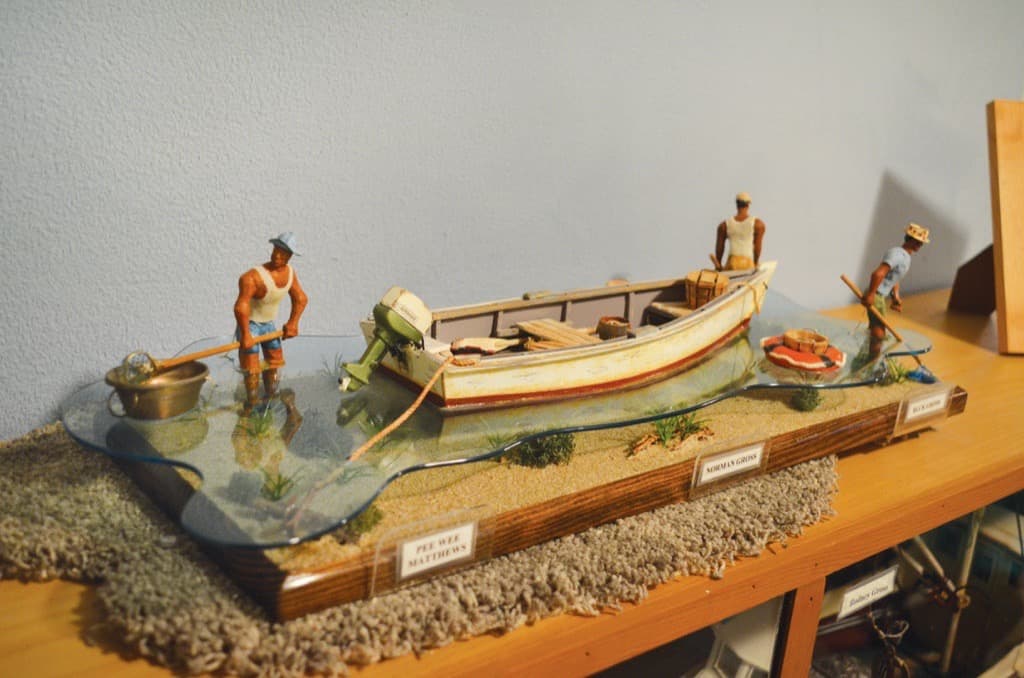
These miniature vessels model a lineage of oyster tonging tradition that spans three generations. From his grandfather’s hand tongs to the patent and hydraulic tongs he grew up with, Gross’ models display the evolution of harvesting technique.
Rather than merely miniaturize the boats and tools of the trade, Gross said he seeks to preserve the life experiences of the watermen in his family with real scenes as they happened.
Gross has also worked to capture his own legacy on the water with a model of his own boat, the Linda Mae, named after his wife.
Having discovered the boat sprouting foliage and falling apart beside the road, Gross decided to restore the craft to its former glory. Years later he constructed the model to immortalize a pleasant day he spent catching croakers with his wife.
Gross’ largest and perhaps most breathtaking piece would be one he calls Taking Tally. This fully fleshed scene depicts Captain Jim and his son K.D., one of the last of his family members still working on the water. In this model, Gross’ buyboat is loaded to the brim with oysters ready for the market. A figurine of K.D. Gross’ mother Ethel sits keeping count of the unloading boats.
Gross began his process for each model by carefully selecting a scene from his memory with some personal or historical significance. He’s made models of age-old oystering techniques and particularly special moments on the water with family.
From there, Gross constructed the framework of each boat from balsa wood by carefully shaping the hull and deck to match each boat’s real-life counterpart.
Along the way, Gross found a series of plastic figurines that were nearly the same scale as his models. Deciding his boats would be greatly improved with some inhabitants, he purchased a few to modify. He carved off the plastic grenades and toy soldier adornments of his figures, replacing them with hand-sewn clothing and accessories. He bent each figure into a position to show movement and interaction on the boat.
Once the figures had been clothed and glued into position, Gross began the final step of the process by painting on the rust and grime that the boat would have accumulated. He added a mixture of crushed oyster shell he’d collected to create piles of miniature oysters.
From the intricate mesh crab pots and nets to the labels on tiny cigarette boxes, Gross’ true craft is in the details. He explained that the items the figures interact with create a contextual foundation for each piece. Scenes of work and leisure coincide in Gross’ display cases.
Gross hopes his models will one day find a home in a place of education. He’d like to share the work he’s done to preserve Chesapeake maritime heritage for future generations.
“A lot of young kids don’t know how to catch a crab, they don’t know what a clamming rig is, they don’t know what an oystering rig is,” He said, gesturing to his models. “I’ll be dead and gone, but they’ll last for 50 or 100 years if you put them in a case like that.”

